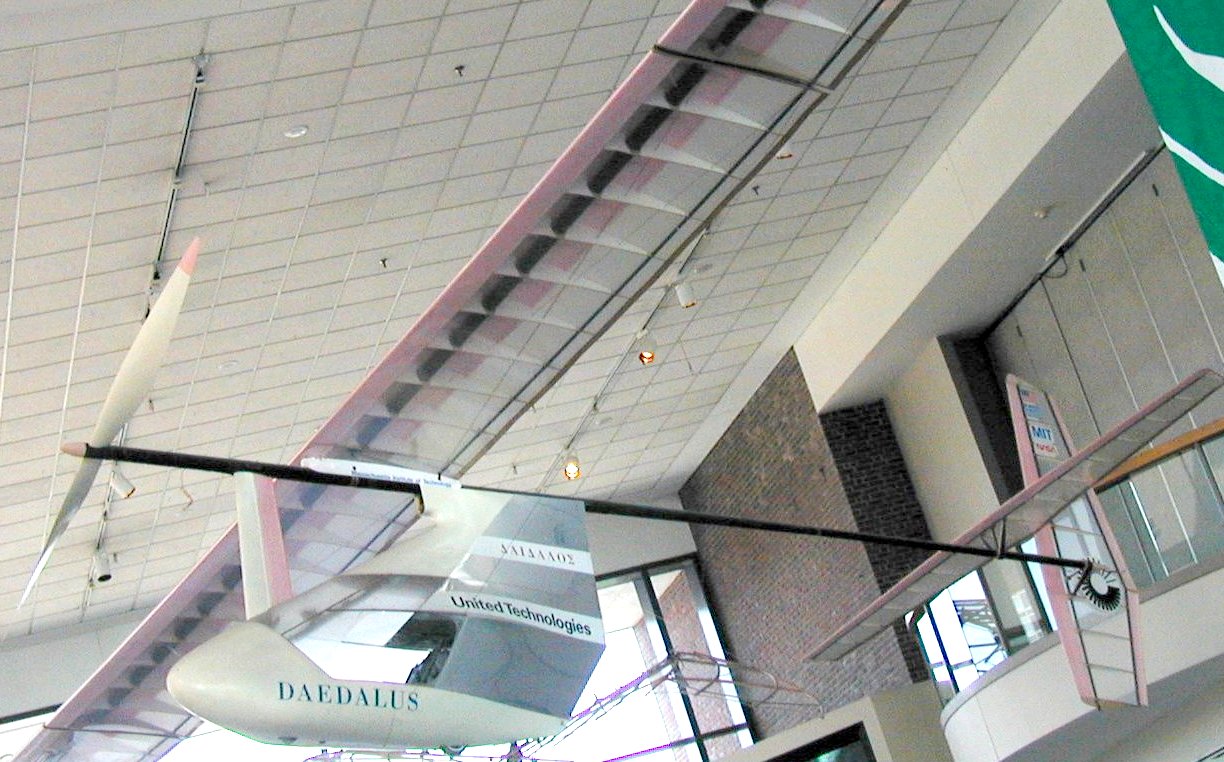Daedalus
Today, we mix a magic drink for Daedalus and Icarus. The University of Houston's College of Engineering presents this series about the machines that make our civilization run, and the people whose ingenuity created them.
Why are the lines from The Wizard of Oz so compelling:
Somewhere, over the rainbow ...
Birds fly ...
Why then, Oh why, can't I?
The myth of Daedalus and his son Icarus also lays its strong hand on our elemental craving to fly. Daedalus was a mythical Greek architect and sculptor. When he offended Minos, King of Crete, Minos threw him and Icarus into prison. Daedalus made wings of wax and feathers. He and Icarus used the wings to fly to Sicily and freedom. In some versions, Icarus flies too high -- too close to the sun. The wax melts and he falls to his death.
Rockets have carried us free of the earth; but we haven't come close to duplicating Daedalus' flight under our own power. A huge interest in human-powered flight began in the late 1960s, but the closest we've come to Daedalus' flight (as of 2001) is a record set by a team of engineers from MIT back in 1988.
They set themselves a more modest objective, but a fearsome one nevertheless. They set out to fly from Crete -- not to Sicily, five hundred miles away -- but to the island of Santorini, seventy-four miles north of Crete. Still, that was over three times the existing world record for human-powered flight.
They built an airplane, not of wax and feathers, but of carbon-fiber composites and plastics. And a wild machine it was! It gave a whole new meaning to the word "spindly." Its wingspan outreached a modern jet airplane's, but it weighed only seventy pounds. Of course, they named it Daedalus.
The most forbidding problem was human endurance. They carefully studied anatomy and metabolism and did extensive testing of twenty-four men and one woman. They finally gave the nod to Greek bicycling champion Kanellos Kanellopoulos. Now he would have to burn up his body energy at the rate of one kilowatt for four solid hours.
To sustain him on the trip, the team developed a special drink -- one that would maintain balances of glucose, sodium, carbohydrates, electrolytes, and water. Kanellopoulos would have to drink about a gallon of the stuff during the flight.
Armed with this witch's brew, he made it on April 23rd -- a remarkable seventy-four miles in four hours. Only one thing marred the success. As the plane approached the coast of Santorini, a powerful crosswind caught it and snapped its tail boom. It splashed down safely, just thirty feet from the shore. This Daedalus seems to have carried a little of Icarus with along with it, after all.
Somewhere, over the rainbow, we crave to fly. Somehow, leaving engines behind gives us back the magic, the myth, that has always accompanied flight. And the game is far from over. People are working on it as I write. Someday we'll remake Daedalus' flight all the way from Crete -- all the way from myth to Sicily.
I'm John Lienhard, at the University of Houston, where we're interested in the way inventive minds work.
(Theme music)
Gorman, C., On the Wings of Mythology. Time, May 2, 1988, p. 67.
Kluger, J., Human-Powered Flight. Discover, Vol. 10, January 1989, pp. 70-71.
Langford, J. S., Triumph of Daedalus. National Geographic, Vol. 174, August 1988, pp. 190-199.
Peterson, I., On a Wing and a Pedal. Science News, Vol. 133, April 30, 1988, p. 277.
This is a greatly revised version of Episode 153.
To see Daedalus, now hanging in the Boston Museum of Natural History, click on the thumbnail image to the right. 